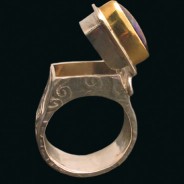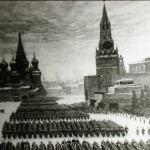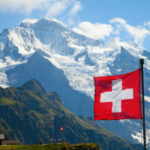New Years Traditions Explained

New Years Traditions Explained
Jan 04
The other day we celebrated the arrival of the new year, 2023, in the usual ways.
Many people gathered in groups or for parties, some celebrated at home. Others, beyond my understanding, decided to stand for hours on end in the freezing cold in Times Square so as to witness the dropping of the crystal ball. Most of us filled glasses with Champagne (I don’t know why we choose Champagne for celebrations), and sang Auld Lang Syne (Again, I don’t know why. Most of us don’t even know the words, much less what they mean in common English), and clinked our glasses together (OK, this I know).
The Times Square Crystal Ball Drop
The tradition of gathering in Times Square to watch the crystal ball drop on New Year’s Eve is one that has become a staple of New Year’s celebrations in the United States. The origins of this tradition can be traced back to 1907, when the owner of the Times Square Building, Adolph Ochs, decided to celebrate the new year by dropping a 700-pound iron and wood ball from the flagpole of the building. This tradition has continued every year since, with the ball being replaced with a more modern and brighter version in the 1920s.
The tradition has evolved over time with the introduction of new technologies and innovations. The current crystal ball is a 12-foot geodesic sphere that weighs 11,875 pounds and is covered in 2,688 Waterford crystal triangles. The ball is also equipped with LED lights that can display various colors and patterns, making it a spectacular sight to behold.
The Times Square crystal ball drop is not only a celebration of the new year but also a celebration of the city of New York. The event showcases the energy and excitement of the city and has become a symbol of hope and renewal for people around the world.
The “Clinking” Of Glasses (Often Filled With Spirits)
This process of clinking comes from the Middle Ages. Approximately 1,000 years earlier, the custom of extending one’s right hand (as estimates are that up to 90% of the World’s population may be right-handed) so as to grasp the right hand of the person facing you developed. In this manner, you have demonstrated convincingly that you are not carrying a sword or dagger in your strong arm, nor is the person facing you. Shaking hands has come to mean greetings and friendship. But originally, it was more utilitarian as a way of determining that you were not in danger from the other person.
So fast forward about 1,000 years, and while the sword and dagger are still very much in use, a subtler form of murder has moved to center stage, poison. Think Lucretia Borgia and her infamous ring.
Water in populated areas in those days was more dangerous than spirits, so it is most likely that wine, beer, or some other spirit would be served at a gathering. So how could you, and the person facing you, feel comfortable that your drink had not been poisoned? Simple solution, I pour some of my wine from my tankard into your tankard. In turn, you then pour wine from your tankard back into my tankard. Voila, if there is poison in one tankard or the other, now we both have. That means we are equally innocent, or one of us is crazy enough to kill himself in order to kill the other. Today we are more civilized, and poisoning (hopefully, spiking as well) one’s drink is uncommon. But the tradition of clinking glasses in friendship, just like with shaking hands, remains. Incidentally, it is called clinking because that is the sound made by two tankards (made of tin, of course) when they hit each other.
Why Do We Toast On New Year’s?
If you are curious as to why we make toasts, it seems that the Romans and Greeks used burnt pieces of bread with fragrant spices as a way of improving low-quality wines and spirits. The word in Latin for burnt is Tostus. It stuck!
In fact, it stuck so well that at my Alma Mater, The University of Pennsylvania, when they sing one of the school’s drinking songs, the ending reads Drink a highball And be jolly, Here’s a toast to dear old Penn! In the fullness of time, this “toast” came full circle.
Originally the student body would really drink an alcoholic beverage at this point in the song during sporting events. When Prohibition made that impossible (well, at least difficult), the students took to throwing, you guessed it, toast onto the playing field at the final line of the song.
Singing Auld Lang Syne
Auld Lang Syne is a traditional Scottish song that is often associated with New Year’s celebrations. The song is believed to have been written by Robert Burns, a Scottish poet, in the late 1700s, and its title translates to “old long since” or “days gone by” in English. The song is a reflection on the passage of time and the importance of remembering the past and cherishing the memories of those who have been a part of our lives.
The tradition of singing Auld Lang Syne on New Year’s Eve can be traced back to the 19th century when it became popular among Scottish immigrants in the United States. The song has since become a popular tradition around the world and is often played or sung at New Year’s Eve celebrations.






